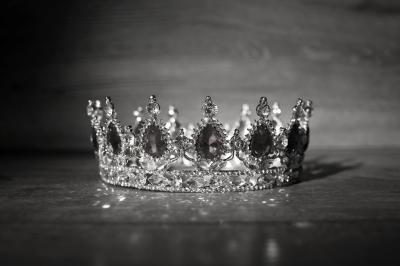Article: The Crown's Influence: Unveiling the Cultural Roots of Modern Elegance

The Crown's Influence: Unveiling the Cultural Roots of Modern Elegance
Does elegance ever go out of style? From the opulent halls of Versailles to the modern-day runways of Paris, the answer is a resounding "no." The concept of elegance in fashion is a timeless story, woven into the very fabric of culture, power, and high society. It's a tale that began in the grand royal courts and aristocratic circles, where clothing was not just a simple covering but a sophisticated language—a powerful tool for communicating wealth, status, and identity.
The Historical Foundations of Elegance
The Royal Court: A Stage for Power
In the 17th and 18th centuries, the royal courts of Europe were the ultimate arbiters of style. In France, the court of Louis XIV at Versailles was a magnificent stage where fashion was a political instrument. The "Sun King" understood the power of appearance, using lavish dress codes and elaborate ceremonies to assert his absolute power over the nobility. Courtiers were expected to spend vast sums on clothing to keep up with the latest trends, a practice that kept them financially dependent on the crown and focused on social climbing rather than political rebellion. This created a culture where every detail, from the cut of a coat to the color of a ribbon, was meticulously planned and served as a key to social standing.
Aristocracy: The Architects of Style
Beyond the monarch, the aristocracy played a vital role in shaping what we consider elegant. They used fashion to distinguish themselves from the common people, signaling their inherited status and refined taste. Men’s fashion was just as elaborate as women's, featuring intricate embroidery, delicate lace cravats, and richly colored velvet coats. For women, elaborate gowns with sweeping skirts and structured corseted waists were the norm. This era established a powerful link between physical appearance and social rank, where a person’s wardrobe was a clear reflection of their place in society.
Etiquette: The Unwritten Rules of Elegance
High society operated under a strict set of rules, and fashion was no exception. These unwritten codes of behavior and dress dictated everything from the fabrics and colors one could wear to the proper attire for different occasions. For instance, specific styles were reserved for attending court, while others were appropriate for a formal dinner or a day in the country. This rigid adherence to protocol created a sense of exclusivity and reinforced the idea that true elegance wasn't just about the clothes themselves but about how one carried oneself within a specific social context.
Key Elements of Historical Elegance
Luxury Textiles: Woven with Wealth
In an age before mass production, luxury textiles were a powerful symbol of opulence and exclusivity. Silk, velvet, and brocade were the materials of the elite. Their rich textures, vibrant colors, and high cost made them synonymous with wealth and sophistication. These fabrics weren't just beautiful; they were a clear sign of who belonged to the upper echelons of society. Owning a garment made of silk was a statement of success and status that was unmistakable.
The Power of Accessories: Small Details, Big Impact
Accessories were crucial to completing the elegant look. Items like gloves, fans, and hats were not merely decorative; they were essential tools for nonverbal communication and display. A delicately held fan could convey a secret message, while a pair of meticulously crafted gloves signaled a lady's refinement and taste. These small, thoughtful details were a powerful part of the visual display of status and grace, adding a layer of subtle sophistication to any ensemble.
Meticulous Tailoring: The Art of the Silhouette
The impeccable tailoring of garments was a hallmark of aristocratic fashion. Corsets, structured coats, and elaborate gowns were painstakingly crafted to create the desired silhouette of the time. This emphasis on precision and structure laid the groundwork for modern tailoring and is still evident in the detailed cuts and sophisticated silhouettes seen on today's luxury runways. The perfect fit was, and remains, a cornerstone of true elegance.
From Courts to Catwalks: The Birth of Modern Fashion
The Royal Influence on Haute Couture
As the power of monarchies waned, the tradition of elegance shifted from the royal courts to the workshops of early designers. Charles Frederick Worth, considered the father of haute couture, began creating exclusive, custom-made designs for the elite in Paris. He formalized the process of fashion design and established the first true fashion house, adopting the traditions of exclusivity and meticulous craftsmanship inspired by royal elegance. He understood that his wealthy clients wanted to feel as unique and special as a queen.
From Rigid Protocol to Runway Freedom
The transition from royal court fashion to modern fashion shows brought a new sense of freedom and personal expression. Pioneers like Coco Chanel liberated women from the restrictive corsets of the past, introducing fluid and comfortable silhouettes that still maintained an air of timeless sophistication. Christian Dior's "New Look" re-imagined the hourglass shape with a modern twist, blending historical grandeur with contemporary flair. These visionary designers took the core principles of historical elegance—luxurious fabrics, fine tailoring, and a sense of grace—and adapted them for a new era, paving the way for the dynamic fashion industry we know today.
How Modern Fashion Continues to Draw on Cultural Roots
Luxury Brands: A Homage to History
Modern luxury brands like Chanel, Gucci, and Dior continue to pay homage to their aristocratic and royal roots. Their collections often feature historical references, from the intricate embroidery reminiscent of a royal gown to the structured jackets inspired by military uniforms. These fashion houses interpret historical elegance with a contemporary flair, creating collections that are both timeless and of-the-moment. They understand that a sense of history adds depth and value to their creations, making each piece more than just an item of clothing—it's a piece of art.
The Enduring Significance of Elegance
Even today, fashion remains a mirror of our culture, reflecting our values and social structures. Luxury fashion, in particular, is still closely linked to social identity and status. The elegance we see on the runway isn't just about beauty; it’s about a legacy—a continuous conversation between the past and the present. It’s a testament to how the art of dressing, once perfected in the courts of kings and queens, still shapes our understanding of what it means to be sophisticated, refined, and truly elegant.
From the political opulence of Louis XIV’s court to the artistic freedom of today's catwalks, the concept of elegance in fashion has a rich and enduring history. The meticulous tailoring, luxurious fabrics, and strict social codes of the aristocracy laid the foundations for the haute couture and luxury brands that define our style today. Elegance is not just a passing trend; it is a timeless symbol of social identity, wealth, and cultural expression that continues to influence how we dress and view the world.



